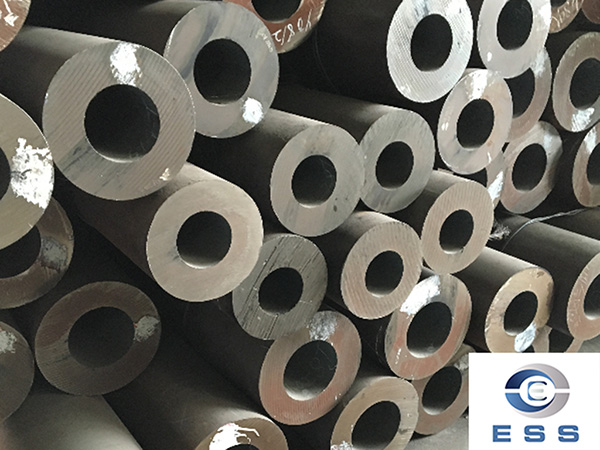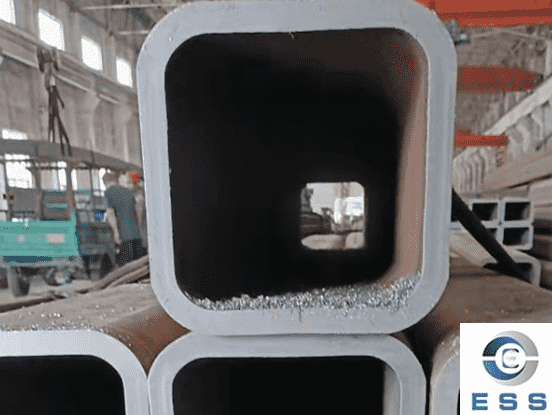What are the advantages of SMLS pipe for transforming wastewater management?
Wastewater management is a global obstacle that needs ingenious services to guarantee clean water system and environmental management. As metropolitan populations grow and industries expand, there is a corresponding boost in wastewater generation, requiring effective and sustainable management methods. Standard wastewater systems typically rely on products such as concrete, clay and older generation pipes. However, in time, these materials can be prone to rust, leakage, and loss of flow performance.
The emergence of seamless (SMLS) piping as an alternative material for wastewater systems provides a promising avenue to resolve these difficulties and usher in a new era of wastewater management. Seamless pipes, also called Seamless pipes, are cylindrical pipes made with no welded joints or joints. They are made from a solid round basic material (generally steel or other metal), which is then heated and perforated to form a hollow cylinder. This production process produces pipe with a consistent structure, higher structural stability, and remarkable strength compared to welded pipe.

1.What are the attributes of Seamless pipes?
Strength and Durability: Seamless tubing shows exceptional mechanical strength due to its undisturbed grain structure. This particular makes them highly resistant to internal and external pressure, thereby decreasing the threat of pipeline failure.
Leakproof: Seamless tubing has no bonded joints, removing possible weak spots where leaks could happen, improving total leakproofness.
Seamless inner surface: Compared to welded pipe, the Seamless production procedure produces a Seamlesser inner surface area, minimizing friction and promoting effective fluid flow.
Corrosion Resistant: Seamless piping made from corrosion-resistant products supplies long service life and reliability in corrosive environments, decreasing upkeep and replacement costs.
2.What are the applications of seamless pipelines in wastewater management?
Seamless pipes have actually been used in a variety of applications in wastewater management systems, where their benefits help transport and treat wastewater more efficiently. Seamless pipelines play a vital function in carrying sewage from domestic, commercial and commercial areas to treatment centers. Their leak-proof properties make sure that wastewater does not contaminate the surrounding environment, thereby securing communities and public health. Wastewater treatment plants depend on strong piping to manage the circulation of water through the various phases of treatment.
The high resilience and rust resistance of Seamless pipes are ideal for this application, guaranteeing effective transfer of wastewater from one treatment system to another. Pressure sewage system systems are designed to carry wastewater over long or uphill distances, benefiting from the strength and pressure handling capabilities of seamless piping. These systems are especially important in uneven or remote areas where gravity-based systems are not practical. Some wastewater treatment procedures produce biogas as a spin-off. Seamless pipelines can be utilized to carry biogas from treatment plants to energy recovery centers, where it can be converted into renewable energy sources such as electricity or heat. When treated wastewater is discharged into natural water bodies, making use of Seamless pipes guarantees effective and leak-free discharge, lessening the threat of contaminating marine communities.
3.What are the advantages of seamless pipelines for changing wastewater management?
The Seamless interior surface area of Seamless tubing assists enhance flow effectiveness, minimizes friction and minimizes the capacity for clogging or clogging. This feature is specifically important in large wastewater systems where consistent flow is vital for ideal treatment. Seamless tubing is resistant to abrasion, degradation and rust, so it needs very little maintenance. This saves money gradually, as maintenance and replacement costs are much lower than systems that depend on more delicate materials. Seamless piping adds to environmental sustainability by preventing leakages and minimizing the release of toxins into natural bodies of water. This in turn helps safeguard marine environments, preserve biodiversity and ensure access to clean water for future generations.
Seamless tubing appropriates for usage in a range of environments, consisting of destructive, high-pressure, and temperature-changing conditions. This versatility makes them an outstanding option for a range of wastewater management scenarios, from urban centers to industrial complexes. Understood for its remarkable toughness, Seamless tubing lasts longer than standard products. Their resistance to corrosion, abrasion and wear ensures they stay functional and structurally sound for years, reducing the requirement for frequent replacement. Seamless tubing has no welded joints, getting rid of a common source of leaks in wastewater systems. This function significantly minimizes the risk of drainage leakage, avoiding environmental pollution and preventing expensive clean-up efforts.
4.Factors to consider and difficulties
While the benefits of Seamless piping in wastewater management are enormous, there are still some challenges and factors to consider that need to be dealt with: The initial expense of carrying out seamless pipes in wastewater systems can be higher than standard products. However, the long-lasting expense savings due to minimized upkeep and replacement outweighs the preliminary financial investment. Picking the appropriate seamless piping material is vital to guaranteeing its effectiveness in a particular wastewater environment. Various materials have differing degrees of deterioration resistance and other residential or commercial properties, so they require to be thoroughly considered during the style phase. The installation of seamless pipe requires specialized understanding and skill to ensure proper installation and alignment. Collaboration in between engineers, contractors and manufacturers is crucial to ensure a successful application. Combination of Seamless piping into existing wastewater systems may need adjustments to guarantee compatibility. This might include adjusting connection points, fittings and other parts to accommodate the new pipe.
Conclusion
Seamless pipes represent a transformative option to wastewater management obstacles, providing increased durability, reduced leakage, improved flow effectiveness, and ecological sustainability. As technology continues to advance, the production and implementation of Seamless tubing may become more cost-effective. Their benefits could extend beyond wastewater transport and treatment to affect the wider water facilities advancement landscape.













 Eastern Steel Manufacturing Co.,Ltd not only improve product production and sales services, but also provide additional value-added services. As long as you need, we can complete your specific needs together.
Eastern Steel Manufacturing Co.,Ltd not only improve product production and sales services, but also provide additional value-added services. As long as you need, we can complete your specific needs together.










